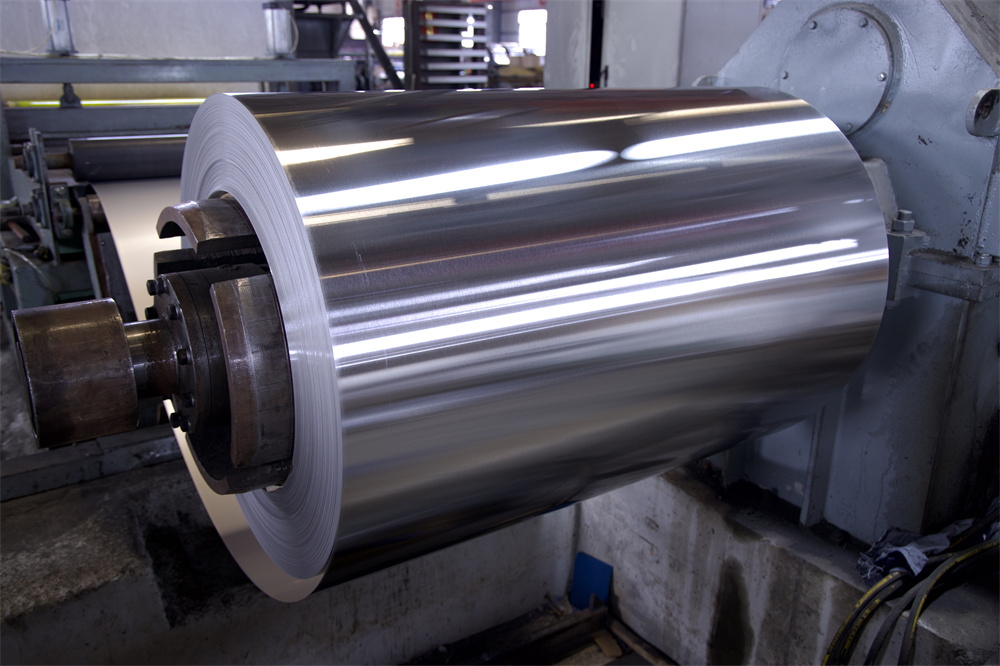In today's world, sustainability and environmental responsibility have become crucial considerations in every aspect of our lives. From our daily choices to industrial processes, the impact on the environment is a growing concern. Stainless steel, a popular material used in various applications, is often touted for its durability and resistance to corrosion. Keep reading the post and learn more about stainless steel.
What Is Stainless Steel?
Stainless steel is an alloy composed primarily of iron, chromium, and other elements. The addition of chromium creates a protective layer on the surface, making stainless steel highly resistant to rust and corrosion. Due to its special quality, it may be used for a wide variety of things, from kitchenware to building materials and even medical equipment.

PVD Color Stainless Steel Coil For Decoration
What Is The Environmental Impact Of Stainless Steel Production?
While stainless steel has many benefits in terms of endurance and durability, its manufacture does have an impact on the environment. The primary environmental concerns associated with stainless steel production include energy consumption, greenhouse gas emissions, and the use of raw materials.
- Energy Consumption: Stainless steel production involves energy-intensive processes such as melting, refining, and shaping. Depending on the stainless steel's intended properties and the production process, different amounts of energy are needed. Traditional stainless steel production methods take up a lot of energy, which increases greenhouse gas emissions.
- Greenhouse Gas Emissions: Stainless steel production, particularly through the conventional method of smelting and refining, releases carbon dioxide and other greenhouse gases. These emissions are a byproduct of the industrial process's usage of fossil fuels, which are then burned.
- Raw Material Extraction: The production of stainless steel requires raw materials such as iron ore, chromium, nickel, and other alloying elements. These materials extraction and processing may have harmful effects on the environment, including habitat loss, soil erosion, and water contamination.

Straight Line Hairline Finish Stainless Steel Coil
What Is The Recyclability Of Stainless Steel?
One of the key aspects that contribute to stainless steel's sustainability is its high recyclability. Stainless steel is considered a valuable material for recycling due to its inherent properties and economic value. Here are some notable points regarding stainless steel's recyclability:
- Endless Recyclability: Stainless steel is 100% recyclable, meaning it can be recycled repeatedly without losing its inherent properties or quality. Stainless steel is distinguished from many other materials by this quality, which also lessens the demand for fresh manufacture.
- Energy and Resource Conservation: When compared to initial manufacture, recycling stainless steel takes much less energy and resources. Recycling stainless steel may save up to 75% of the energy necessary for initial manufacture, according to industry figures. Moreover, recycling reduces the need for extracting new raw materials, conserving natural resources.
- Environmental Benefits: The recycling of stainless steel offers environmental benefits by reducing the carbon footprint associated with primary production. We can reduce greenhouse gas emissions, trash output, and the environmental effect of mining and refining activities by using recycled stainless steel.

Decorative No.8 Mirror Stainless Steel Coils
Conclusion
While stainless steel production does have environmental implications, its inherent properties and high recyclability make it a potentially sustainable material. XINGUANGYUAN is not only a stainless steel sheet wholesale but also an experienced stainless steel coil supplier. If you are interested in the stainless steel products, get in touch with us!


